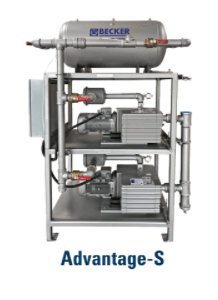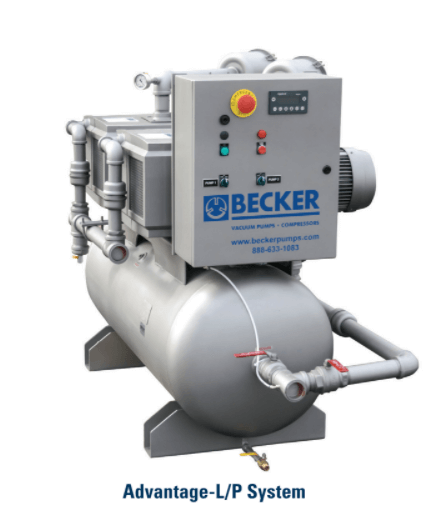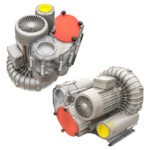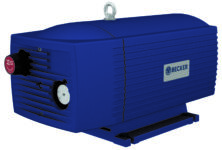
When you know your medical vacuum system well, it’s obvious when the system is struggling. Maybe the pumps run constantly, or cycle on and off too frequently.
This blog will focus on central medical vacuum system size and design, and how it can affect your system’s performance.
We’ll cover the factors that lead to unsuitable pump sizing, identify over-and-undersized systems, see how the pros handle medical vacuum system size, and review things to consider before buying a new pump.
Let’s get to it.
IMPROPERLY SIZED VACUUM SYSTEMS
How is it that a critical, life-sustaining system like a medical vacuum can be sized incorrectly? Well, there are a few reasons.
To start, it’s possible that a salesperson sold a hospital or laboratory the wrong medical vacuum system size in the first place, which can happen when an ill-informed distributor sells a system they don’t understand.
To a customer who’s not an expert in pumps, the large system’s additional vacuum capability and future potential are enticing. As for the distributor, it’s in their favor to sell an expensive, oversized system.
Win-win, right? Actually, not at all.
OVERSIZED MEDICAL VACUUM SYSTEM SIZE
Oversizing a central vacuum system presents two unique problems.
One, pumps that are sized too large will turn on and off frequently. This cycling potentially pushes the pumps outside their operational guidelines and may cause lasting damage to the motors.
Secondly, if a facility installs a minimum run timer to prevent over-cycling, then the motor will apply more horsepower than necessary, wasting energy and money.
UNDERSIZED MEDICAL VACUUM SYSTEM SIZE
Undersized systems will constantly run to keep up with demand—meaning the pumps never get a break. This non-stop operation shortens the equipment’s lifespan. The central vacuum system size also creates a risky compliance situation where the reserve pump may kick in to satisfy the demand for suction.
If the reserve pump turns on for day-to-day operations, the undersized system no longer meets NFPA 99 requirements. It’s out of compliance—a serious issue for any healthcare facility.
FIND OUT IF YOUR EXISTING MEDICAL VACUUM SYSTEM SIZE IS CORRECT

It’s possible you were sold the wrong medical vacuum system size, or that your facility has outgrown the original installation. If the present-day demands on your vacuum have the system undersized, you might hit a snag.
Here’s how to find the optimal system size for your application:
- Watch the system during peak usage times for a couple of hours.
- Look for the number of pumps in operation, the vacuum level of the system, and any fluctuations of either.
- Do the above three times a month and record your findings.
Remember, you’re hoping to observe the pumps operating in an NFPA-99 compliant manner. The system should maintain a steady vacuum and the pumps should be alternating without relying on the backup.
If you suspect an issue with your system, call in a professional like Becker Pumps, who specializes in medical vacuums. We’ll have all the information required to properly size the system with the information you’ve collected.
KEEP NFPA IN MIND FOR NEW SYSTEMS
Becker’s sizing method for new systems comes from experience gained performing over a thousand installations. Using a suitable formula is the key to medical vacuum system design. Ours is built on NFPA’s tried & tested recommendations.
We take the number of Type A terminals (higher usage), Type B terminals (lower usage), the number of operating rooms, and then apply the appropriate usage factor. By adding all three calculations together, we develop a reasonable overall need for a facility.
This formula has proven itself over time to determine a medical vacuum system size without going overboard.
FINALLY, THINK MORE PUMPS BUT AT A SMALLER SIZE

While a large pump may supply the vacuum required, it’s wise to consider using multiple smaller pumps.
For example, if you want to purchase a system with two 10-HP pumps, consider an alternative with three 5-HP pumps instead. This multi-pump system meets the NFPA 99 standard that if one pump is down, there’s still a pump in reserve to handle the entire load.
The three smaller pumps will also have less expensive maintenance parts. They’re also easier to maintain, are quieter, and use less electricity during off-hours.
All in all, make sure you have as much information as possible about your facility’s needs when sizing your central medical vacuum system.
THE BECKER ADVANTAGE
Becker Pumps is a leader in vacuum pump technology. Our central medical vacuum systems have a reputation as some of the most reliable in the industry. Becker offers modular and expandable systems that can grow along with your facility.
We’re proud to offer a 3-year warranty on all of our medical vacuum systems.




